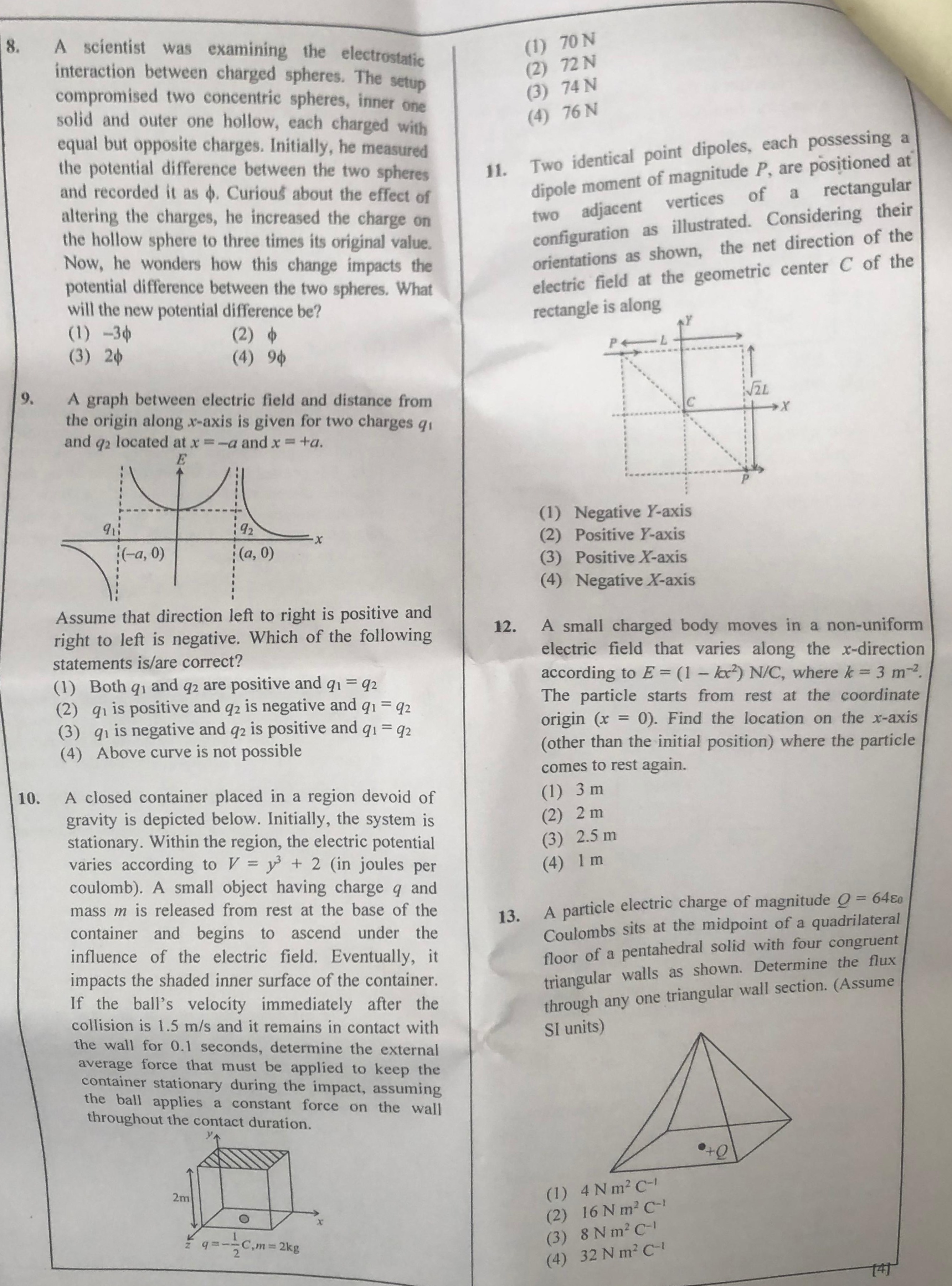Question
Question: A scientist was examining the electrostatic interaction between charged spheres. The setup compromis...
A scientist was examining the electrostatic interaction between charged spheres. The setup compromised two concentric spheres, inner one solid and outer one hollow, each charged with equal but opposite charges. Initially, he measured the potential difference between the two spheres and recorded it as ϕ. Curious about the effect of altering the charges, he increased the charge on the hollow sphere to three times its original value. Now, he wonders how this change impacts the potential difference between the two spheres. What will the new potential difference be?

-3ϕ
ϕ
2ϕ
9ϕ
ϕ
Solution
Let the inner sphere have radius r1 and charge q1, and the outer hollow sphere have radius r2 and charge q2. The potential difference between the inner and outer spheres is given by ΔV=Vinner−Vouter. The potential at the surface of the inner sphere is Vinner=4πϵ01(r1q1+r2q2). The potential at the surface of the outer sphere is Vouter=4πϵ01(r2q1+r2q2). The potential difference is ϕ=Vinner−Vouter=4πϵ01(r1q1−r2q1).
Initially, the spheres have equal but opposite charges. Let q1=q and q2=−q. So, the initial potential difference is ϕ=4πϵ01(r1q−r2q)=4πϵ0q(r11−r21).
The charge on the hollow sphere is increased to three times its original value. Original charge on the hollow sphere (q2) was −q. The new charge on the hollow sphere (q2′) is 3×(−q)=−3q. The charge on the inner sphere (q1′) remains q.
The new potential difference ϕ′ is: Vinner′=4πϵ01(r1q+r2−3q) Vouter′=4πϵ01(r2q+r2−3q)=4πϵ0r2−2q ϕ′=Vinner′−Vouter′=(4πϵ01r1q−4πϵ01r23q)−(4πϵ01r2q−4πϵ01r23q) ϕ′=4πϵ0q(r11−r23)−4πϵ0q(r21−r23) ϕ′=4πϵ0q(r11−r23−r21+r23) ϕ′=4πϵ0q(r11−r21)
Thus, the new potential difference ϕ′ is equal to the original potential difference ϕ.
